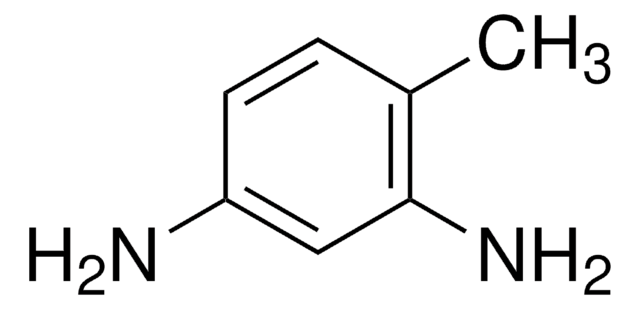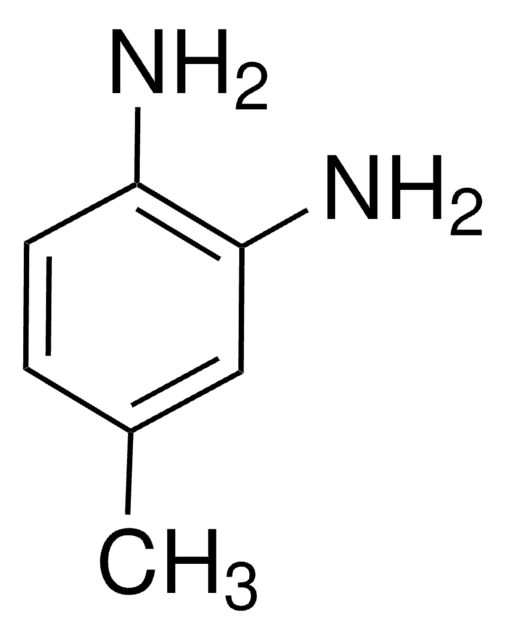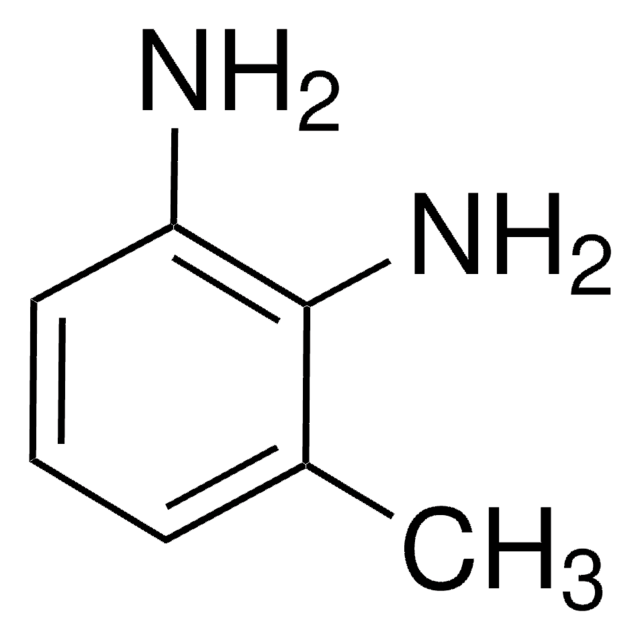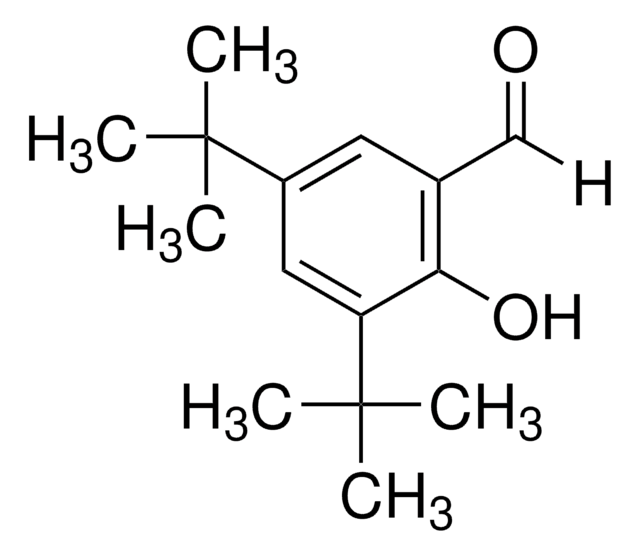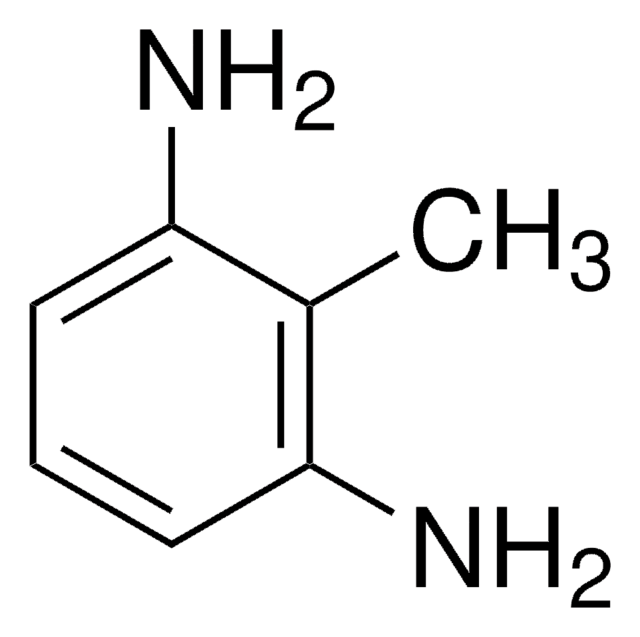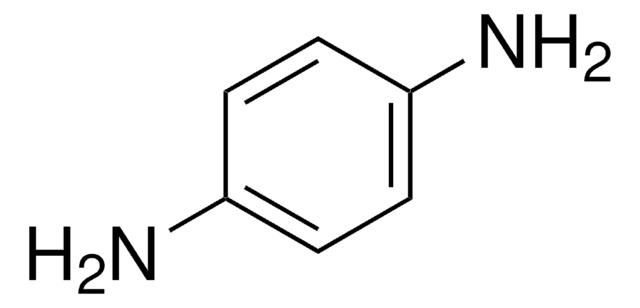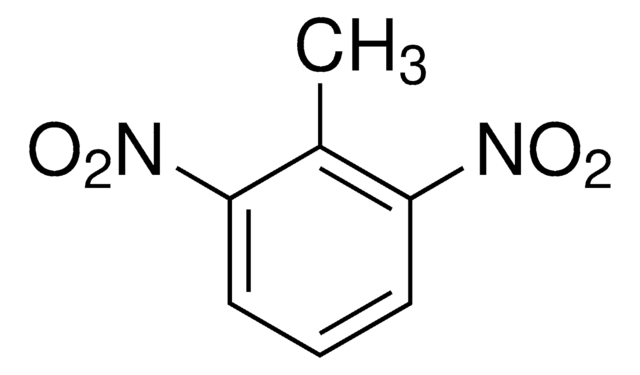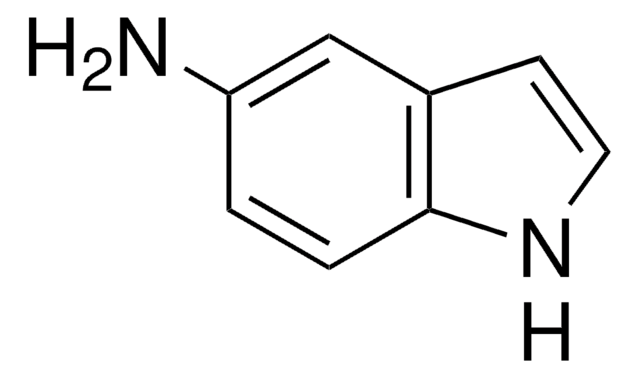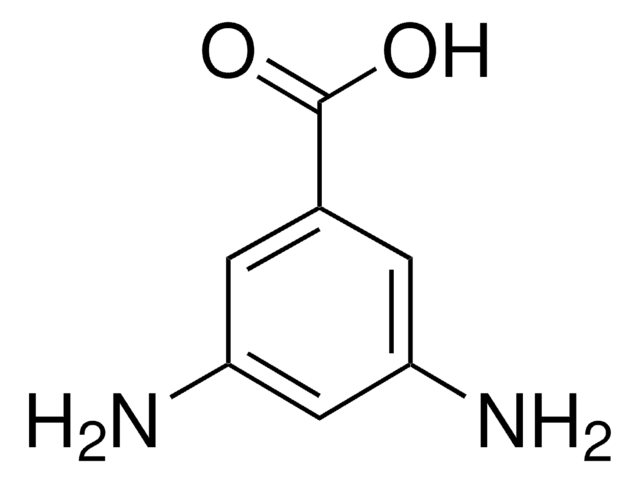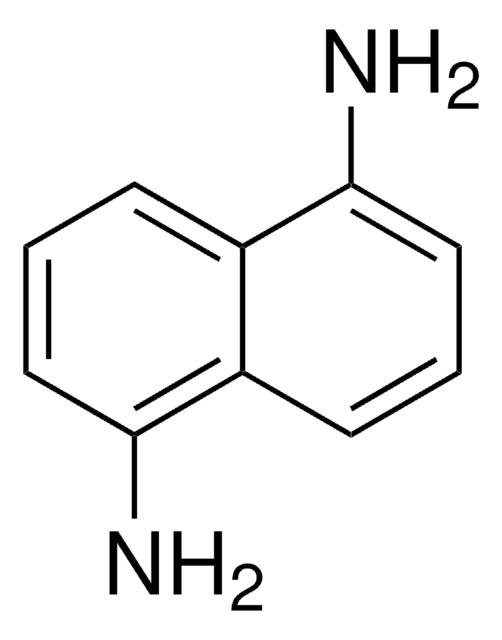148113
2,6-Diaminotoluene
97%
Synonym(s):
2,6-Toluenediamine, 2,6-Tolylenediamine, 2-Methyl-m-phenylenediamine
Sign Into View Organizational & Contract Pricing
All Photos(1)
About This Item
Linear Formula:
CH3C6H3(NH2)2
CAS Number:
Molecular Weight:
122.17
Beilstein/REAXYS Number:
2079476
EC Number:
MDL number:
UNSPSC Code:
12162002
PubChem Substance ID:
NACRES:
NA.23
Recommended Products
Quality Level
assay
97%
form
solid
mp
104-106 °C (lit.)
SMILES string
Cc1c(N)cccc1N
InChI
1S/C7H10N2/c1-5-6(8)3-2-4-7(5)9/h2-4H,8-9H2,1H3
InChI key
RLYCRLGLCUXUPO-UHFFFAOYSA-N
Related Categories
General description
2,6-Diaminotoluene (2,6-DAT) is an aromaticamine characterized by its two amino groups located at the 2 and 6 positions ona toluene ring. This structure imparts unique properties such as highreactivity and the ability to form hydrogen bonds, making it an importantintermediate in synthesis thermoplastic polyamides. Its solubility in organicsolvents further enhances its applicability in polymer synthesis of compositepolymer materials and drug delivery systems.
signalword
Warning
Hazard Classifications
Acute Tox. 4 Dermal - Acute Tox. 4 Oral - Aquatic Chronic 2 - Muta. 2 - Skin Sens. 1
Storage Class
11 - Combustible Solids
wgk_germany
WGK 3
flash_point_f
Not applicable
flash_point_c
Not applicable
ppe
dust mask type N95 (US), Eyeshields, Faceshields, Gloves
Choose from one of the most recent versions:
Already Own This Product?
Find documentation for the products that you have recently purchased in the Document Library.
Customers Also Viewed
H Tinnerberg et al.
American Industrial Hygiene Association journal, 58(3), 229-235 (1997-03-01)
Comparative air measurements of toluene diisocyanate (TDI) were performed in a 5.6 m3 standard atmosphere and at a TDI flexible foam plant. Air samples were collected in midget impinger flasks containing 9-(N-methyl-amino-methyl)-anthracene (MAMA) in toluene and on 13-mm glass-fiber filters
Hironao Takasawa et al.
Mutation research, 751(1), 12-18 (2012-11-06)
Detecting genotoxicity in the liver is considered an effective approach for predicting hepatocarcinogenicity, as many genotoxic chemicals in vivo may act as hepatocarcinogens in rodents. Here, a genotoxic rodent hepatocarcinogen, 1,2-dimethylhydrazine dihydrochloride (1,2-DMH), and a genotoxic (Ames positive) noncarcinogen, 2,6-diaminotolunene
P M Wilson et al.
Archives of toxicology, 70(10), 591-598 (1996-01-01)
Using gas chromatography/mass spectrometry for detection of hemoglobin adducts, and 32P-postlabelling for DNA adducts, we examined macromolecular binding in Fischer-344 rats administered 2,4-or 2,6-toluene diamine (TDA). The dose-response and correlative relationship between the two macromolecules were investigated over a range
O Sepai et al.
Toxicology letters, 77(1-3), 371-378 (1995-05-01)
Toluenediamines (TDA) were monitored in blood, urine and redon drainage following implantation of polyurethane (PU)-covered breast prostheses. In the redon drainage TDAs showed an initial steep drop. The levels did not fall below detection limits but formed a plateau, which
B M Miller et al.
Environmental and molecular mutagenesis, 26(3), 240-247 (1995-01-01)
A rapid and simple procedure for the micronucleus test (MNT) in vitro using Chinese hamster ovary (CHO) cells was established in our laboratory. The assay is intended to quickly screen chromosomal aberrations in vitro within the framework of industrial genotoxicity
Our team of scientists has experience in all areas of research including Life Science, Material Science, Chemical Synthesis, Chromatography, Analytical and many others.
Contact Technical Service